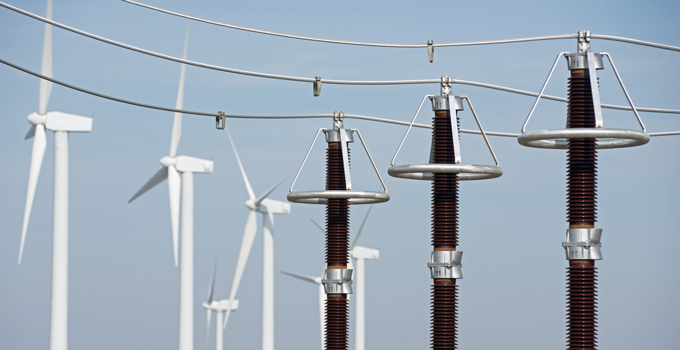THOUGHT LEADERSHIP
Understanding the challenges of medium-sized power systems
Power systems in the range of 200–500 MW face unique challenges, including how to incorporate increasing amounts of intermittent inverter-based renewable energy, such as solar PV and wind generation. What are these challenges, and how can they be solved?

Large power systems, like the interconnected grid of the eastern Australian states, are well-understood. These systems have extensive engineering support and sophisticated models to handle renewable energy integration, with network-wide inverter-based renewables (IBR) penetrations ranging from 25–50% and local penetrations up to approximately 115%. Similarly, small power systems, such as those up to 30 MW found in remote mining sites, also manage high IBR penetrations, sometimes reaching 100%.
However, power systems in the range of 200–500 MW face unique challenges. We call these systems ‘anti-Goldilocks’ power systems. Stemming from the children’s story of ‘Goldilocks and the Three Bears’, Goldilocks has come to mean something neither too big nor too small, neither too complex nor too simple – in other words, ‘just right’. An anti-Goldilocks system, on the contrary, has an uncomfortable combination of both large and small system challenges without the solutions available to a large system operator.
Examples of anti-Goldilocks (AG) power systems in Australia and the Pacific include:
- Fiji power system
- New Caledonia
- French Polynesia (Tahiti)
- Guam
- PNG (Port Moresby)
- Darwin Katherine interconnected power system
- North-west minerals power system (Mt Isa and surrounds)
- Western Australian north-west interconnected system
- the Tasmanian power system during low demand.
Common challenges in AG power systems
AG power systems share characteristics that make managing high IBR penetration both inevitable and challenging.
- 1. Geographical distribution and stability
In small power systems, all generation sources are often close together, ensuring good transient stability. Large systems benefit from high interconnection levels that couple machine inertias effectively. AG power systems, however, are geographically spread out without these stabilising features, leading to difficult transient stability conditions.
- 2. Environmental conditions and storage
Small systems can install enough battery energy storage (BESS) to manage fluctuations in renewable energy sources. Large systems distribute IBR across vast areas, minimising localised impacts from wind and irradiance. AG systems, however, typically have most IBR within a 100 km radius, which means that similar environmental conditions can affect all IBR at once, potentially causing sudden shortfalls in generation.
- 3. Rapid changes in IBR penetration
AG power systems often have high electricity costs and small sizes relative to each IBR station. This makes renewable generation very attractive financially, and a single IBR connection can immediately cause significant penetration increases, potentially reaching 80%+ quickly and catching network operators off guard.
- 4. Responsibility for quality and ancillary services
Because small systems typically have just one generator and one consumer, they tend to have straightforward responsibility allocation for the quality of supply and ancillary services. Large systems are either government-owned or regulated with established market mechanisms for these services. AG systems may lack these structures, often having multiple generating companies and consumers, complicating the provision and funding of necessary services.
- 5. Modelling and planning
Large systems have developed accurate models over many years. Small systems manage with less detailed models because most errors don’t significantly impact overall accuracy. AG systems typically have poor models. The requirement for greater accuracy is only a recent phenomenon, but a greater level of accuracy has been difficult to achieve due to the lack of collaboration between customers and generators, a lack of necessary modelling skills, and a reluctance to see modelling as core business.
Transitioning to inverter-based renewables: four horizons
Successful operation during the transition to IBR involves navigating 4 distinct horizons:
- H1: conventional dominance
The network is dominated by traditional plants with control based on speed and voltage droop. The system can manage almost indefinitely without wide area controls during disturbances.
- H2: high IBR penetration (60%)
There is a high level of IBR penetration, say 60%. While the distributed versus wide area control issues don’t change significantly, prolonged outages of wide area control cannot be tolerated. Systems should operate without human intervention for at least 20 minutes during such failures.
- H3: minimal rotating machines
There are periods with only one large rotating machine. Planners should ensure the system can operate for 20 minutes without human intervention if this generator fails.
- H4: full IBR operation
The system operates with 100% IBR and should be designed to manage without human intervention for 20 minutes during wide area control outages.
Solutions and optimisations
AG power systems face significant but solvable challenges as IBR connections increase. While installing sufficient battery capacity and running rotating plants at low output or adding synchronous condensers can help, these solutions can be costly. Therefore, optimising solutions to minimise additional costs is essential.
Entura has worked on most of the AG power systems listed above and we have found that batteries, while helpful, are only one part of the solution. Effective rules and regulations that allocate risks and responsibilities appropriately, along with a causer-pays mentality and prudent risk acceptance, lead to the more cost-effective technical solutions.
To discuss how Entura can help you ensure the safety of your electrical assets, contact David Wilkey or Patrick Pease.
About the author
David Wilkey is the Senior Principal, Grid & Power, at Entura. David has more than 25 years’ consulting experience across a wide range of electrical engineering projects, including power system studies, power system and generator protection, generator connection rules, and primary plant electrical engineering. David’s primary interests include all aspects of electrical engineering for hydropower projects, such as hydro turbine governors, generator excitation and generator protection systems.
MORE THOUGHT LEADERSHIP ARTICLES
26 June, 2024






